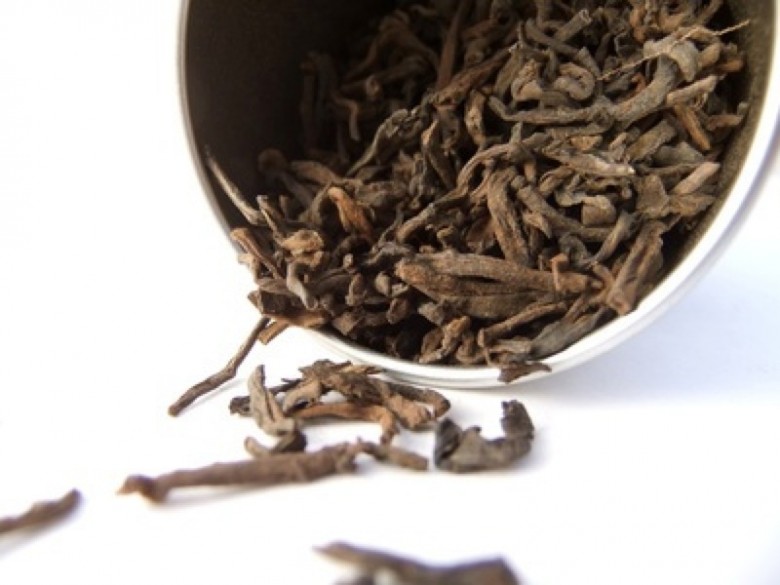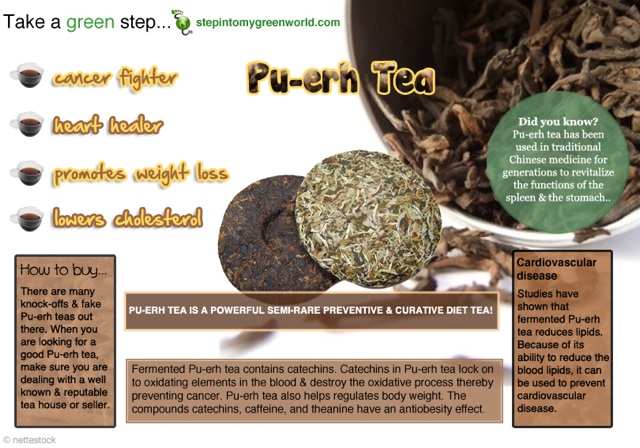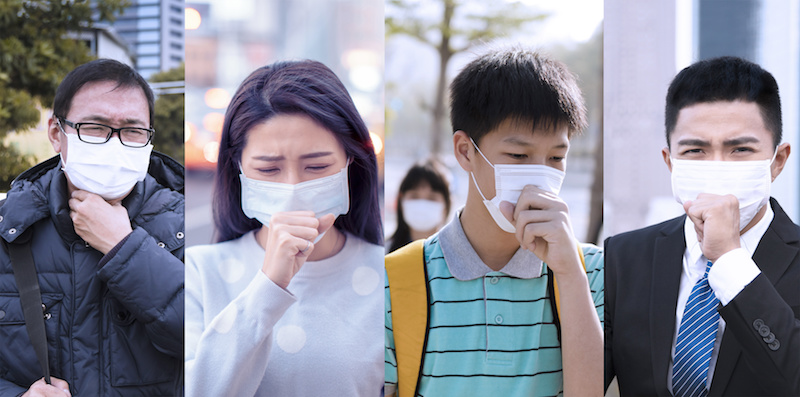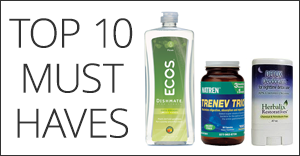
- Pu-erh tea also spelled as Pu’er tea, is known as Yunnan Tuocha.
- It is a potent tea, is praised and revered in traditional Chinese Medicine. To understand its uniqueness, it is important to know how it is made.
- The leaves of this variety of old wild tea tree are taken and put through a process of maturation that results in the creation of what is called “Maocha”.
- This Maocha, meaning “light green rough tea”, is then taken and put through one of two processes. Either it is immediately pressed into tea cakes where it is then classified as “raw/green pu-erh”, or it is put through an artificial aging process for 30 to 40 days where the leaves are turned, splashed with water, covered with cloth, and then left to ferment.
- Once the fermenting stage is over, the tea is then dried and pressed into tea cakes and classified as “cooked/black pu-erh”.
- Traditionally, the tea was pressed raw and then vaulted for a long time and (up to 100 years) to gain the fermented status. The new process of fermentation was developed by the Kunming Tea Factory in 1975 for pratical and economic reasons.
- Pu-erh Tea has been used in traditional Chinese medicine for generations.
- Health benefits:
- 1. Aids in weight loss and is considered a diet tea
- 2. Detoxifies the body by removing its toxins
- 3. Cures dysentery
- 4. Improves vision
- 5. Lowers blood pressure
- 6. Promotes blood health by purifying it
- 7. Reduces cholesterol
- Pu-erh Tea is in its own way a ” one of a kind tonic-tea. To make sure sure you get the real thing (not the knock off), please look for a reputable tea house.
- Numi Organic Tea makes an excellent one.
- For the truth behind the teas you are drinking.
- For the unique benefits of popular teas.
-
- REFERENCES:
- 1. Hari, Vani. “Do You Know What’s Really In Your Tea?” FoodBabe.com. Food Babe, n.d. Web. 26 Aug. 2013.
- 2. “Glaucus Research – Consumer Watchdog Reports.” GlaucusResearch.com. Glaucus Research, 21 Feb. 2013. Web. 26 Aug. 2013.
- 3. Mercola, Joseph, D.O. “Plastic and Cancerous Compounds in Tea Bags—A Surprising Source of Potential Toxins.”Mercola.com. Mercola.com, 24 Apr. 2013. Web. 26 Aug. 2013.
- 4. Kuo KL, Weng MS, Chiang CT, Tsai YJ, Lin-Shiau SY, Lin JK. “Comparative Studies on the Hypolipidemic and Growth Suppressive Effects of Oolong, Black, Pu-erh, and Green Tea Leaves in Rats.” National Center for Biotechnology Information. U.S. National Library of Medicine, 26 Jan. 2005. Web. 23 Mar. 2014.
-
Pu-erh Tea Health Benefits



















